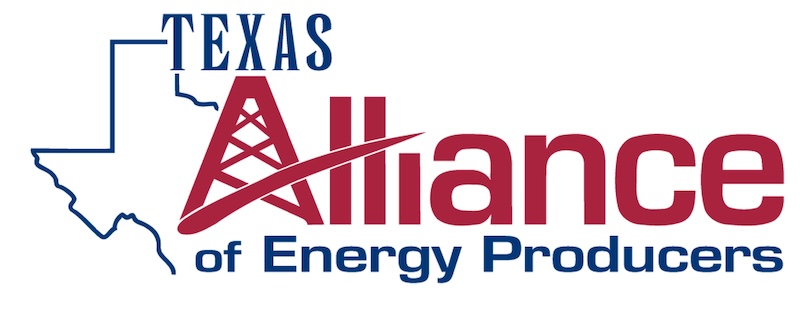Comments to the Small Business Advocacy Review Panel—Oil and Natural Gas Sector New Source Performance StandardsAUSTIN, Texas (Aug. 13, 2021)— Lanelle Wiggins, RFA/SBREFA Ms. Wiggins: Thank you for the opportunity to provide final comments to the Small Business Advocacy Review Panel—Oil and Natural Gas Sector New Source Performance Standards. We have expressed before, but it is worth reiterating that our association sincerely appreciates EPA’s work to listen to small businesses and small entity representatives to incorporate their concerns into the rulemaking process moving forward. As a representative of small businesses, the Texas Alliance of Energy Producers has an obligation to advocate for our clients when we see potentially negative regulatory burdens will make small businesses less competitive to larger competitors or worse make operations impossible due to regulatory requirements sized to larger companies. We fear without clear exception and a bifurcation of regulatory requirements for small operations, small business will be harmed. We represent over 2,600 individuals and member companies in the upstream oil and gas industry; our members are oil and gas operators/producers, service and drilling companies, royalty owners, and a host of affiliated companies and industries in Texas and beyond. The majority of our members and board of directors work for, or own and operate small businesses as defined by the Small Business Administration. In fact, 100% of the operators represented on our board of directors qualify as small businesses under the Small Business Administration’s size standards guidelines. There are only a handful of oil and gas producers in Texas that would not be qualified as small businesses under those employee count size standards. In terms of the operators represented in our membership, easily over 95% would be considered small businesses. Even those can be misleading, however. The SBA size standards suggest that an oil and gas producing company with fewer than 1,250 employees (and yes, there are revenue standards as well) is considered a small business under that definition. Of the top 30 crude oil and natural gas producers in Texas, fewer than half have more than 1,250 employees. The next tier of operating companies, the larger publicly traded independents and other sizable independent producers, may total another 20-30 operators. The number of employees in these companies may total anywhere from 200 to 800 or so. In Texas, however, there are literally hundreds of operators outside of these groups who are producing some volume of crude oil and natural gas in the state. It would be difficult to argue that the smallest of small oil and gas operators, who comprise the majority of Texas operators (in number, not in production volume) would not be significantly affected by the implementation of more costly and burdensome methane regulations. A rigorous examination of these potentially negative economic impacts through the SER/SBAR process is warranted prior to the drafting of new methane rules. That also points to the potential need to establish subcategories of sources that would include size and/or production volume/volume per well/well site distinctions. Marginal operators and operators of low volume wells and well sites stand to be exponentially more greatly affected by the implementation of one-size-fits-all regulations. Indeed, such a process would clearly disadvantage smaller operators relative to larger operators who can more easily absorb the costs and other burdens involved. As to marginal/low volume wells, no matter who operates them (large or small producers) those wells are much more likely to become uneconomic and cease to operate with additional imposed costs of continuing to operate those wells. And though it is not the purpose of this process to consider such outcomes, costly and burdensome methane regulations make it more likely that low volume wells may be ultimately orphaned or abandoned as the cost of operating them goes up. Reliable data on emissions from marginal/low volume wells and well sites would be highly useful in informing the proper ways to deal with these issues in the writing and implementation of the new methane rule. Sufficiently reliable data does not seem to exist but may become clearer with the release of the DOE study later this year, referenced below, to assist in quantifying emissions from low volume wells. It would be advisable to wait on that data and other information before moving forward with regulations that will affect the operators of those wells. Cost and Regulatory BurdenThe cost estimates provided by EPA were helpful to guide discussions with Alliance members. Optical gas imaging (OGI) requirements place unique burdens on small businesses, different than larger ones. EPA has repeatedly heard in-house training and specialization on this is the best way to control cost, but that option is not always available to small businesses. The prospect for contract or outsourcing this requirement will place undue burden on small operators and cost estimates should reflect regional variability and rural workforce considerations that will show dramatic differences in price per service. The Alliance surveyed our membership and suspect $2,368 per facility to be low. Many of the comments from members reflect they lack the adequate staff and resources to meet this new requirement should it be implemented for all facilities. “This expense combined with other monitoring activities would make some of our leases uneconomic,” said one member. Another said, “We have low volume wells. This would be cost prohibitive.” For low production wells there is a significant concern that cost cannot be absorbed due to price constraints and the inability to absorb new operational requirements. This will result in a heightened negative impact to small businesses. We asked if this contracted workforce was available across Texas to perform this new requirement and 74% of respondents said ‘No’. There were a variety of reasons for this which included lack of workforce and training with many objections raised on the need for this at smaller operations or marginal production facilities. In many cases, operators reported that those cost may be higher because the internal operations to adapt and conduct new regulatory requirements has been limited due to the contraction of the industry in 2020. The Alliance created and tracks a Texas upstream oil and gas economic index, and the employment data contained within indicates the loss of about 36% of direct upstream jobs in Texas in the 2019-2020 industry contraction. These limitations skew the cost estimate higher due to operators being more reliant on third-party contractors to facilitate revisions to emission controls not already required by state and federal law. Environmental ProtectionFinally, we would ask that EPA and SBA consider a forthcoming study conducted by the Department of Energy’s National Energy Technology Laboratory entitled “Quantification of Methane Emissions from Marginal (Small Producing) Oil and Gas Wells”: Project Number DE-FE0031702. The project is anticipated to end September 30, 2021, and we think the study’s finding will be beneficial to EPA in evaluating new controls for potential emissions from marginal wells. Thank you again for the opportunity to provide comments on the Small Business Advocacy Review Panel – Oil and Natural Gas Sector New Source Performance Standards. Sincerely,
|
Alliance Partners












